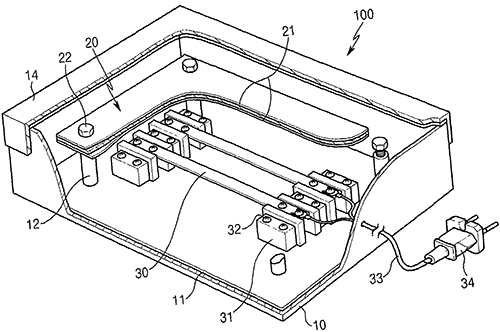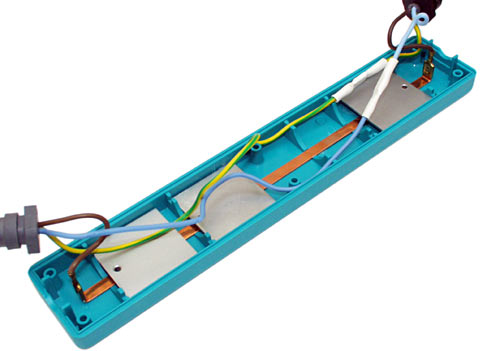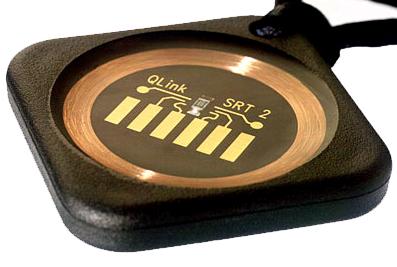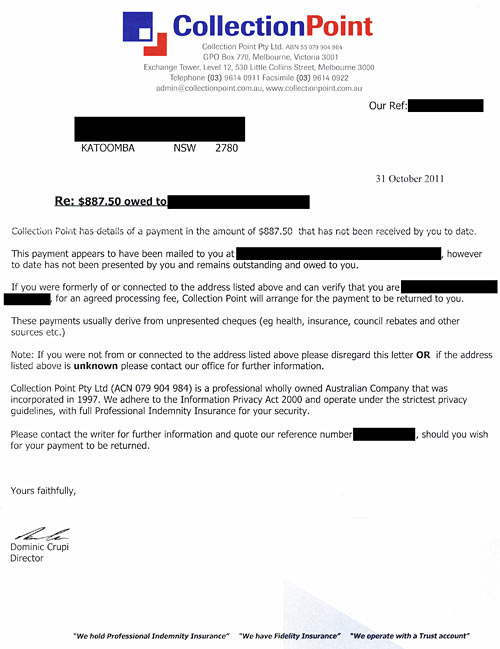Thanks, once again, to all you readers and your ceaseless campaign to make me sad and irritable, I now know that a couple of days ago that jewel in Australia's investigative-reporting crown, A Current Affair, ran a story about yet another bloody "power saver".
You can see the five-minute ACA segment here.
(Pleasingly, as I write this, the comments on that page are overwhelmingly negative. I've only clicked the "10 more comments" button a couple of times, but thus far it's the sanest comment thread I've ever seen on a mainstream-media site.)
This latest magic electricity talisman is the "Oz Power Saver", the Web site for which is immensely proud of the ACA story, but oddly bereft of further information. You can't even buy one. All you can do is "register your interest".
The basic claims on the site are par for the energy-saver course, though. "Save up to 25% off your electricity bills", "reduces energy usage", and the inevitable "guarantee".
That ACA video fills in the rest of the blanks, with the same stuff we've seen over and over from other magic-box salesmen.
Like the guarantee, for instance, which this time says that they'll refund the purchase price if you don't save at least the Oz Power Saver's purchase price in three years.
It would be churlish and tendentious of me to point out that scam-gadgets, definitely including "power savers", almost always have alleged money-back guarantees, and that power-saver hucksters have a tendency to spawn new businesses rather more frequently than once every three years.
So I shall, of course, not point that out.
On goes the video, dum de dum, it's "already a huge hit in the US and Europe", here's a testimonial from the "one lucky family" in all of Australia who've had the chance to try the thing out, here's no testimonial from anybody equipped to test it properly, "big energy users like factories and hotels have been using this technology for years"... all right, I reckon we're ready for an atrociously mangled explanation of power factor, and power-factor correction, now.
Ah, there it is.
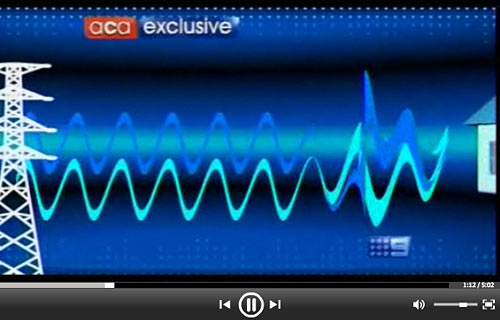
The ACA explanation actually starts out well, with a double-sine-wave depiction of the voltage/current phase relationship, but then spears off into the bushes with some gibberish about the phase relationship getting messed up as the electricity "travels to your home". (Later on, they tell us that the further you are from a distribution transformer, the worse your power will be.)
It's actually reactive loads that mess up power factor, not the length of wire between your house and a pole-pig transformer. But, more importantly, the people who worry about power factor are the suppliers of the electricity, not its consumers.
To try to get my umpteenth repetition of this lecture out of the way as quickly as possible:
1: There are many, many "power saver" products on the market. Most are little plug-in things, but there are also versions like the Oz Power Saver that are hard-wired in the breaker box. Actually, there are some that're very, very like the Oz Power Saver, to the point of looking exactly the same, as we'll see in a moment.
2: There is no known way for devices like this to work. Power-factor correction is a real thing, but it is completely impossible for it to save a domestic power consumer any money at all, even if their house has a lousy aggregate power factor, which it almost certainly doesn't.
3: The reason why it can't save you any money is that domestic (and most commercial) power consumers aren't billed for a bad power factor. Domestic (and most commercial) power meters can't even detect a bad power factor. Promoters of these gadgets always come up with some sort of tortured pseudoscientific word-salad that suggests that your electricity meter actually measures the "bad electricity" or "dirty power" or whatever that the magic box cures, but this is not actually the case unless you're running a factory full of motors, and it's not always the case even then.
Back to the Oz Power Saver.
I applied the terrifying black-hat hacker firepower of the TinEye image search to...
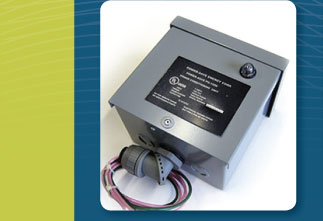
...this picture of the product, on the Oz Power Saver site. Whaddayaknow, there was the same image...
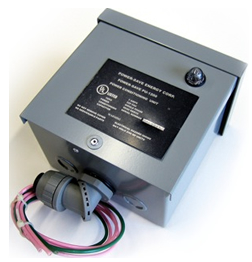
...being used on numerous sites selling the good old Power-Save 1200!
Now, the Oz Power Saver can't be the exact same thing as the Power-Save 1200, because the Power-Save 1200 is a US product, and Australia's mains voltage is twice that of the USA.
(Well, OK, it could be the exact same product, if it contains auto-sensing multi-voltage circuitry, or no circuitry at all, which latter situation turns out to be not far from the truth for certain products in this market sector. I don't think either is likely in this case, though.)
One quite marked difference between the Oz Power Saver and the Power-Save 1200 is price. The Power-Save 1200 is about a $US300 product, while the Oz Power Saver, according to the cheerful distributor in the ACA story, revels in a price of eight hundred and ninety-five Australian dollars, which is about the same number of US dollars, as I write this.
But it's guaranteed to save you at least that much in three years, et cetera et cetera.
In the ACA-story demonstration of the Oz Power Saver's incredible qualities, we get to see the traditional Wooden Partition with Wires and Motors On It, and the similarly traditional Cheap 'N' Dodgy Power Meter (sometimes replaced by one or more $10 multimeters) giving its imaginative impression of the power factor of a load.
The demo load manages to achieve a truly miserable power factor of 0.39 according to said meter, which leaps to 0.87 when the Oz Power Saver's activated.
These power-factor numbers may actually be accurate, since the test load appears to be a free-spinning unloaded AC motor, which can be counted on to have a crappy power factor. AC motors that're matched passably well to their load, like most AC motors in the world, can be expected to have a much better power factor. Power tools - electric drills, angle grinders - may have a lousy PF when they're spinning free, but you'll have to spend rather a lot of time standing there grinning at a free-spinning drill bit for that load to make any significant difference to your residence's aggregate power factor.
More realistically, washing machines and tumble-dryers may sometimes have lousy power factor, because different loads of washing mean different loads on the motors. But you'd, again, have to do rather a lot of washing for this to make a significant difference to your home's aggregate power factor, and even if you do, it won't cost you any more money, because residential customers aren't billed by power factor. (Just in case you forgot that.)
Shortly after the cheap-electricity-meter demo, A Current Affair's piece on the Oz Power Saver suddenly switches to an update on a story from last year, about some blokes who make a whole different power-saving thingy, the "Futurewave Energy Saver". Which I immediately, of course, assumed would be another box of pure uncut pixie dust. But which I suspect is actually kosher.
The Futurewave device is alleged to reduce the power consumption of swimming-pool pumps, and some other similar motors. It isn't a magic power-factor box, though; it's a speed-control device, that according to the FAQ saves actual real power, instead of confusedly-described apparent power, by just running the pool pump at reduced speed for most of the pool-cleaning cycle, when full power isn't actually required.
This seems as if it might actually work. I don't know if it does, but it seems to have no arguments with the laws o' physics, or of electricity billing.
Next, the ACA story whiplashes back to the Oz Power Saver, and cheerfully informs us that the Oz Power Saver will "do the same" for "anything with a motor".
So presumably you'd be a total idiot to buy the Futurewave product, that only works for pool pumps.
God, I'd be irritated if I were the Futurewave people. It'd be like taking the time to build a comfortable and safe 80-mile-per-gallon car, and then finding yourself lost in a vast mob of hucksters selling cars that run on water.
I'm not holding my breath for a regulatory agency to do anything about the Oz Power Saver. It is, for a start, not actually on sale yet, and the regulators are overworked and understaffed. Scams that don't actively kill people often don't get a very high priority.
Here, to cheer us all up a bit, is the Australian government slapping down one of the many plug-in power savers, called the Enersonic Power Saver, which I mention here and here.
The Australian Consumers' Association were so impressed with another plug-in power saver, the "Reegen Micro-Plug" that they gave it a Shonky Award. And here are those nice people who sold one of these things until they realised it was a scam, then said sorry. They, along with some non-Australian examples are mentioned at the end of this old post.
My offer from the end of that post still stands. If the Oz Power Saver people want to contact me about installing one of their boxes at my house, preferably with a nice Frankenstein knife switch so I can switch it in and out of the circuit at will just as they do in their demo, I will test it with various household motor loads and will immediately recant all of the above if the Oz Power Saver turns out to do a damn thing.
